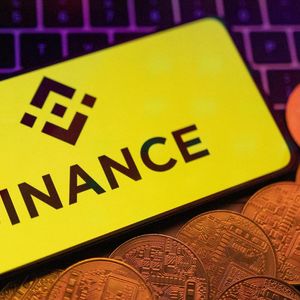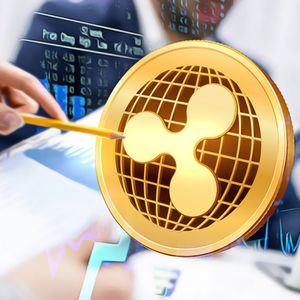VanEck Crypto Monthly Recap For June 2025
15 min read
Summary Bitcoin climbed 3% on strong ETP inflows while altcoins slumped, deepening a divergence that underscores both growing institutional BTC demand and fragility across the broader crypto landscape. Since January 2024, only 36% of the top 300 tokens are up. 25% more tokens have dropped over 50% than gained that much, and in 2025 alone, 7.5x more tokens declined over 50% than appreciated similarly. On June 25th, Bitcoin miner Bit Digital announced its transition into a pure-play Ethereum staking and treasury company, initiating the wind-down of its Bitcoin mining operations and beginning a gradual conversion of its BTC holdings into ETH. Bitcoin climbed 3% on strong ETP inflows while altcoins slumped, deepening a divergence that underscores both growing institutional BTC demand and fragility across the broader crypto landscape. June was a quiet month for crypto, with most tokens drifting lower amid declining volatility. Bitcoin ( BTC-USD ) was the standout, rising +3% for the month on steady ETP inflows totaling $4.5B . The divergence between BTC and altcoins continued to widen. The MarketVector Smart Contract Leaders Index (MVSCLE) fell (-5%) in June, highlighting the continued underperformance of altcoins over the past 18 months. Price Returns June YTD Coinbase 42.12% 41.16% MarketVector Global Digital Assets Equity Index 29.20% 15.17% Nasdaq Index 6.57% 5.48% S&P 500 Index 4.96% 5.50% MarketVector Decentralized Finance Leaders Index 4.19% -48.35% Bitcoin 2.62% 14.70% Ethereum -2.79% -25.09% MarketVector Smart Contract Leaders Index -3.68% -26.83% MarketVector Infrastructure Application Leaders Index -13.11% -45.92% MarketVector Meme Coin Index -17.18% -52.30% Source: Bloomberg as of 6/30/2025. Index performance is not representative of fund performance. It is not possible to invest directly in an index. Past performance is no guarantee of future results. Not intended as a recommendation to buy or sell any securities named herein. Since January 2024, only 36% of the top 300 tokens are up. 25% more tokens have dropped over 50% than gained that much, and in 2025 alone, 7.5x more tokens declined over 50% than appreciated similarly. Just 12% are up YTD, underscoring the increasingly skewed, Pareto-like nature of the crypto market. June Leaders: Arbitrum’s ARB ( ARB-USD ): +6% Tron’s TRX ( TRX-USD ): +4% June’s Laggards: Cardano’s ADA ( ADA-USD ): -18% Sui’s SUI ( SUI-USD ): -15% ARB rebounded from an early-June drawdown to end the month up 6% . This move followed Robinhood’s announcement to list up to 200 tokenized equities on Arbitrum for EU investors starting June 30. Long term, Robinhood aims to migrate this to its own blockchain, developed by Arbitrum creator Offchain Labs. While the news is positive, it’s unlikely to drive material fee growth or value accrual to the ARB token. The commercial arrangement compensates Offchain Labs, not ARB holders. Exchange Volumes and BTC Volatility Trading volumes dropped 29% across centralized exchanges (CEXeS) and were flat YoY. Spot volumes in BTC and ETH fell to multi-year lows relative to futures (BTC ( BTC-USD ): 19% , ETH ( ETH-USD ): 13% ). DEX volumes hit $332B in June, setting a new DEX/CEX ratio high of 28% , up from 21% in May. Return Profiles of Top 300 Non-Stable Tokens – Most Returns Negative Over All Time Periods Source: Artemis XYZ as of 6/30/2025. Past performance is no guarantee of future results. Not intended as a recommendation to buy or sell any securities named herein. BTC volatility dropped to 33% , the lowest since summer 2024. This was partly seasonal but also reflects structural demand: ETPs bought 42K BTC in June and BTC treasury firms added another 68K , more than offsetting June’s 13.5K BTC mined. This steady absorption suppresses volatility by providing a consistent bid. Crypto Treasury Companies An additional volatility dampener comes from the emergence of BTC treasury companies. Twenty-one new entities adopted the MicroStrategy-style strategy in June. These firms use debt issuance and equity to accumulate BTC, often trading at premiums to their holdings based on bullish BTC assumptions and easy capital access. These firms often trade at premiums to their BTC holdings, but the model carries major downside risk. A BTC drawdown >25% could crash their mNAVs, as seen with MSTR in 2022. In extreme cases, forced BTC sales could trigger recursive declines. While innovative, these firms are high-risk, option-like plays on BTC. In May we wrote about how MicroStrategy ( MSTR ), the pioneer of BTC Treasury Strategies, employs financialization to gradually increase BTC exposure for common shareholders. Currently, these entities are benefitting from a positive market environment buoyed by BTC price appreciation. With BTC going up in value, these companies can more easily finance additional BTC exposure by issuing securities receptive capital markets. If we assume that the market is rationally valuing these companies based upon terminal BTC holdings and a terminal BTC price in the future, this valuation will increase during market upswings. This is because BTC price projections will become more bullish and each company’s ability to finance new BTC purchases will also increase. The result is a higher terminal valuation for each BTC treasury company. As such, many of these companies are trading a premium to their holdings of BTC based upon a rosy outlook for Bitcoin and the financing market for Bitcoin treasury companies. However, things can turn grim very quickly for these Bitcoin companies if BTC experiences one of its typical, large drawdowns of (> -25% ). MSTR demonstrated this negative dynamic during the summer of 2022 when its mNAV fell as low as 0.7 . If BTC price collapses, the downside will translate into mNAV degradation for many of these BTC companies. And, if these businesses are unable to fund operations or make debt repayments, market participants may begin to sense these BTC companies may be forced to liquidate their BTC holdings. This may cause recursive price depreciation for both the treasury companies and BTC. As a result, while we see some of these vehicles as interesting financial experiments to give holders option-like exposure to BTC, we recognize the massive risks posed to investors in these companies. Solana Updates Solana Has the 2nd Highest “Blockchain GDP” Source: Token Terminal as of 6/30/2025. Past performance is no guarantee of future results. Not intended as a recommendation to buy or sell any securities named herein. With an ETH ETP approved last July, anticipation was high for a SOL ETP in 2025. That milestone materialized on July 2 with the launch of the REX-Osprey Solana + Staking ETF (SSK), which traded an impressive ~$40M on its first day. However, SSK is not a spot-based ETP in the traditional sense. Instead, it functions as a fund-of-funds, holding a Cayman subsidiary that invests in SOL and participates in staking via providers like Jito. The structure sidesteps direct SEC approval of spot SOL custody by leveraging the 1940 Act and a C-corp wrapper. While a major step forward, SSK comes at a cost, charging a 1.4% expense ratio, and leaves room for future products with purer exposure. As the first spot SOL ETP filer, we remain optimistic that a more direct, staking-enabled structure could be approved, offering lower fees, improved redemption mechanics, and greater transparency at launch. We believe Solana is well-positioned to underpin the emerging ‘Internet Capital Markets’, a digital environment for real-time financial exchange. Its strengths include: Latency: Solana confirms transactions in 400ms with 5s finality which is vastly quicker than BTC (1 hour) or ETH (13 min), critical for real-time commerce. Throughput: Solana averages 1.5K TPS with bursts >10K TPS, enabling cheap, sub-cent microtransactions for mass-scale applications. Ongoing Innovation: With teams like Anza and Firedancer, Solana aims for 100K TPS within a year, 1M TPS in three and this aggressive roadmap is unique among blockchains. Developer Base: Solana hosts ~6,400 active developers ( ~25% of all crypto devs), driven by its rich tooling and performance. Solana’s application layer continues to grow across verticals, including trading, liquid staking, consumer tokens, and anti-bot infrastructure. Key contributors to Solana GDP in June included: Most Top Solana Apps are in Trading or Stablecoins Source: Token Terminal as of 6/30/2025. Past performance is no guarantee of future results. Not intended as a recommendation to buy or sell any securities named herein. Raydium Dominates Activity – 2x Other 9 Apps Combined Source: Token Terminal as of 6/30/2025. Past performance is no guarantee of future results. Not intended as a recommendation to buy or sell any securities named herein. Solana Trading Volumes Cluster Around a Few Top Apps Source: Dune @Ally as of 6/30/2025. Past performance is no guarantee of future results. Not intended as a recommendation to buy or sell any securities named herein. Jito: Solana liquid-staking protocol that issues JitoSOL and shares validator MEV earnings with stakers. This application derives value from all DEX activity by means of earning MEV revenues. Raydium: The top Automated Market Maker on Solana whose liquidity pools plug into a central on-chain order book for combined AMM and limit-order depth. Adds revenues through trading activity. pump.fun: No-code Solana launchpad for new tokens that provides novel assets that drive new trading volumes. The tokens launched on Pump were responsible for as much as 90% of Solana trading volumes in January 2025. Meteora: A novel AMM whose pools adjust fees and token balances algorithmically to reflect market conditions. Meteora’s volumes are up 272% YoY. Orca : Solana AMM supporting concentrated-liquidity “Whirlpool” pools for capital-efficient swaps. Orca was once a more dominant DEX but has lost market share to competitors who focused on memecoins falling from 31% market share in 1Q2024 to 15% market share by 1Q2025. Axiom Trade: Axiom is a recent creation to prevent Solana users from being front run by trading bots. Trading volume has grown 40x since Jan 2025 to June 2025, $8M -> $3.2B . Trojan: A trading application that simplifies trading by using Telegram as a wallet and to execute trades. This provides a more “social trading” experience. The app has grown from 160K monthly active users in Jan 2025 to 350K monthly active users in June 2025. Photon : A competing telegram trading application to Trojan that earned $6.9M in revenue over the past month. BullX: A platform that combines complex trading features to enable more sophisticated trading strategies. The application averages 260K monthly active users in June 2025 and generated $2.6M in revenues. SOL ETP and Staking Considerations A key feature for a successful SOL ETP will be staking integration. Without it, investors could lose out on 7–10% annual yield and suffer dilution, as roughly half of SOL’s yield derives from inflationary issuance. However, including staking introduces multiple challenges: Operational risks: These include validator slashing, key management failures, or governance misalignment. Tax uncertainty: There is limited IRS guidance on staking income treatment. Principal-agent issues: Validators may profit from opaque activities (e.g. MEV) not passed through to ETP holders. Redemption constraints: While ETP shares must redeem T+1, unstaking SOL can take ~2 days (and longer for ETH). Market makers must hedge this gap at a cost (~9bps/day at a 40% cost of capital). Some solutions for redemptions have been presented, but none of these are ideal. One idea is to let market makers charge investors for early access to unstaked tokens, but that model assumes liquid and cheaply priced withdrawal markets. During bouts of volatility, the cost of capital soars and the exit fee does too. Another idea is to hold a liquid staking token (LST), yet regulators in several jurisdictions treat these tokens as unregistered securities. Additionally, they are prone to de-pegging under stress. In the summer of 2022, Lido’s stETH traded at ( 88% ) percent of its net asset value. LSTs also introduce additional smart-contract risks that are hard for typical ETF investors to evaluate. We are working with validators to model these tradeoffs and remain optimistic about a path forward. With transparency, coordination, and thoughtful structuring, a staking-enabled SOL ETP is achievable. Ethereum Updates Spot ETH ETPs See Largest Monthly Inflows of 2025 Source: Glassnode, Yahoo Finance as of 6/29/2025. Past performance is no guarantee of future results. Not intended as a recommendation to buy or sell any securities named herein. Investors poured ~$1.1B into Ethereum ETPs in June, the second-largest month since their launch in 2024. Actual institutional demand for ETH may be even higher, as this figure coincides with a renewed interest in using ETH as a treasury asset. We first noted this trend in May, when several public companies began emulating the treasury strategy popularized by Strategy (MSTR), but using ETH instead. While both ETH ETPs and ETH treasury strategies are bullish for the asset, they compete for similar pools of capital. Source: Yahoo Finance, Company Press Releases as of 6/30/2025. Past performance is no guarantee of future results. Not intended as a recommendation to buy or sell any securities named herein. On June 25th, Bitcoin miner Bit Digital ( BTBT ) announced its transition into a pure-play Ethereum staking and treasury company, initiating the wind-down of its Bitcoin mining operations and beginning a gradual conversion of its BTC holdings into ETH. However, the stock opened down (- 17% ) the following morning, raising questions about market appetite for ETH treasury-focused firms. In contrast, on June 30th, newly uplisted BitMine Immersion Technologies ( BMNR ) announced a $250M private placement, selling 55,555,556 shares of common stock for $4.50 per share, with plans to use the proceeds to acquire ETH for its treasury operations. We suspect this divergent performance reflects BMNR’s smaller size, prominent backers, and relatively large fundraise, which could make it a more compelling and straightforward pure-play ETH treasury play in the eyes of investors. Ethereum’s blockchain itself also saw meaningful inflows in June, adding ~$5.1B in net digital assets. Nearly all of these new assets ( ~$5.0B ) originated from Coinbase’s Base L2, even as Base’s monthly DEX volumes declined ( -13% ). The fading AI-driven activity (e.g., VIRTUAL -26% ) likely drove this decline. 34% of Ethereum Transactions Involved Stablecoins in June, Driving Network Activity Near All-Time Highs Source: Glassnode as of 6/30/2025. Past performance is no guarantee of future results. Not intended as a recommendation to buy or sell any securities named herein. While perhaps defensive by crypto standards, this rotation into the L1 may not be bearish. Instead, it suggests that on-chain traders, primarily retail, are aligning with institutional investors’ renewed interest in Ethereum’s base layer. In June, stablecoins experienced a breakout moment following Circle’s IPO and the GENIUS Act’s advancement towards the House, with daily transactions rising (+7%) month-over-month and (+27%) year-over-year. Of the $125B in total stablecoin supply, Ethereum L1 hosts the majority (51%) and settles over ( 58%) of all stablecoin transaction volume ( 29% on ETH L1, 25% on Base, and 4% across Arbitrum, Mantle, and OP Mainnet). Meanwhile, Ethereum-native DeFi tokens such as Maple Finance ([[SYRUP]] +61% ), Sky ([[SKY]] +22% ), Uniswap ([[UNI]] +17 %), and Aave ([[AAVE]] +9% ) were among June’s top-performing tokens, underscoring how Ethereum’s legacy protocols are benefitting from real-world, stablecoin-driven financial applications. Accordingly, we believe the all-time high in NFT transfers on Ethereum is being driven not by JPEG art speculation, but by emergent use cases like tokenized real-world assets, digital identifiers, and on-chain debt instruments. Links to third party websites are provided as a convenience and the inclusion of such links does not imply any endorsement, approval, investigation, verification or monitoring by us of any content or information contained within or accessible from the linked sites. By clicking on the link to a non-VanEck webpage, you acknowledge that you are entering a third-party website subject to its own terms and conditions. VanEck disclaims responsibility for content, legality of access or suitability of the third-party websites. Discloures Index Definitions S&P 500 Index: is widely regarded as the best single gauge of large-cap U.S. equities. The index includes 500 leading companies and covers approximately 80% of available market capitalization. Nasdaq 100 Index: is comprised of 100 of the largest and most innovative non-financial companies listed on the Nasdaq Stock Market based on market capitalization. MarketVector Centralized Exchanges Index: designed to track the performance of assets classified as ‘Centralized Exchanges’. MarketVector Decentralized Finance Leaders Index: designed to track the performance of the largest and most liquid decentralized financial assets, and is an investable subset of MarketVector Decentralized Finance Index. MarketVector Media & Entertainment Leaders Index: designed to track the performance of the largest and most liquid media & entertainment assets, and is an investable subset of MarketVector Media & Entertainment Index. MarketVector Smart Contract Leaders Index: designed to track the performance of the largest and most liquid smart contract assets, and is an investable subset of MarketVector Smart Contract Index. MarketVector Infrastructure Application Leaders Index: designed to track the performance of the largest and most liquid infrastructure application assets, and is an investable subset of MarketVector Infrastructure Application Index. MarketVector Digital Assets 100 Large-Cap Index: market cap-weighted index which tracks the performance of the 20 largest digital assets in The MarketVector Digital Assets 100 Index. MarketVector Digital Assets 100 Small-Cap Index: market cap-weighted index which tracks the performance of the 50 smallest digital assets in The MarketVector Digital Assets 100 Index. MarketVector Meme Coin Index: modified market cap-weighted index which tracks the performance of the 6 largest meme coins. Meme coin refers to crypto assets often named after characters, individuals, animals, artworks, or other memetic elements. Initially supported by enthusiastic online traders and communities, these coins are intended for entertainment purposes. Coin Definitions Bitcoin (BTC): A decentralized digital currency enabling peer-to-peer transactions without intermediaries or a central authority. Ethereum (ETH): A decentralized platform that enables smart contracts and decentralized applications (dApp S ) using its native token, Ether. Solana (SOL): A high-performance blockchain using Proof-of-History and Proof-of-Stake to support fast, low-cost dApps and decentralized finance. BNB (BNB): The native token of the BNB Chain ecosystem (formerly Binance Smart Chain), used for gas fees, staking, and DeFi applications. Avalanche (AVAX): A highly scalable smart contract platform designed for speed and low fees, supporting custom subnets and DeFi applications. Cardano (ADA): A proof-of-stake blockchain emphasizing academic research and peer-reviewed development; used for dApps and token issuance. Polkadot (DOT): A multichain network that enables interoperability between blockchains via parachains and a central relay chain. Tron (TRX): A blockchain platform focusing on digital entertainment and content sharing, enabling low-cost transactions and USDT transfers. Toncoin (TON): A layer-1 blockchain originally developed by Telegram, optimized for scalability, speed, and integration with the messaging app. Sui (SUI): A high-throughput, low-latency Layer 1 blockchain designed for parallel transaction execution and on-chain asset management. Near Protocol (NEAR): A Layer 1 blockchain with a sharded architecture designed for developer-friendly applications, recently pivoting toward AI and intent-based trading. Hedera (HBAR): A proof-of-stake network using a unique hashgraph consensus algorithm, focused on enterprise-grade decentralized applications. Mantle (MNT): A modular Ethereum Layer-2 solution using Optimistic Rollups and Alt-DA to improve scalability and cost-efficiency. Base: A Coinbase-backed Ethereum Layer-2 using Optimistic Rollups to offer fast, low-cost transactions within a regulated environment. Scroll: An Ethereum Layer-2 network utilizing zk-rollups for enhanced security, scalability, and faster transaction speeds. EigenDA: A decentralized data availability layer leveraging Ethereum validators to offer scalable, modular rollup infrastructure. Celestia (TIA): A modular blockchain focused on providing decentralized data availability for Layer-2 rollups and other chains. Uniswap (UNI): A leading decentralized exchange (DEX) on Ethereum that uses an automated market maker (AMM) model for permissionless token swaps. Risk Considerations This is not an offer to buy or sell, or a recommendation to buy or sell any of the securities, financial instruments or digital assets mentioned herein. The information presented does not involve the rendering of personalized investment, financial, legal, tax advice, or any call to action. Certain statements contained herein may constitute projections, forecasts and other forward-looking statements, which do not reflect actual results, are for illustrative purposes only, are valid as of the date of this communication, and are subject to change without notice. Actual future performance of any assets or industries mentioned are unknown. Information provided by third party sources are believed to be reliable and have not been independently verified for accuracy or completeness and cannot be guaranteed. VanEck does not guarantee the accuracy of third party data. The information herein represents the opinion of the author(s), but not necessarily those of VanEck or its other employees. Index performance is not representative of fund performance. It is not possible to invest directly in an index. In vestments in digital assets and Web3 companies are highly speculative and involve a high degree of risk. These risks include, but are not limited to: the technology is new and many of its uses may be untested; intense competition; slow adoption rates and the potential for product obsolescence; volatility and limited liquidity, including but not limited to, inability to liquidate a position; loss or destruction of key(s) to access accounts or the blockchain; reliance on digital wallets; reliance on unregulated markets and exchanges; reliance on the internet; cybersecurity risks; and the lack of regulation and the potential for new laws and regulation that may be difficult to predict. Moreover, the extent to which Web3 companies or digital assets utilize blockchain technology may vary, and it is possible that even widespread adoption of blockchain technology may not result in a material increase in the value of such companies or digital assets. Digital asset prices are highly volatile, and the value of digital assets, and Web3 companies, can rise or fall dramatically and quickly. If their value goes down, there’s no guarantee that it will rise again. As a result, there is a significant risk of loss of your entire principal investment. Digital assets are not generally backed or supported by any government or central bank and are not covered by FDIC or SIPC insurance. Accounts at digital asset custodians and exchanges are not protected by SPIC and are not FDIC insured. Furthermore, markets and exchanges for digital assets are not regulated with the same controls or customer protections available in traditional equity, option, futures, or foreign exchange investing. Digital assets include, but are not limited to, cryptocurrencies, tokens, NFTs, assets stored or created using blockchain technology, and other Web3 products. Web3 companies include but are not limited to, companies that involve the development, innovation, and/or utilization of blockchain, digital assets, or crypto technologies. All investing is subject to risk, including the possible loss of the money you invest. As with any investment strategy, there is no guarantee that investment objectives will be met and investors may lose money. Diversification does not ensure a profit or protect against a loss in a declining market. Past performance is no guarantee of future performance. © Van Eck Associates Corporation. Original Post Editor’s Note: The summary bullets for this article were chosen by Seeking Alpha editors.

Source: Seeking Alpha



